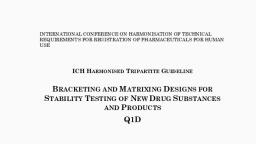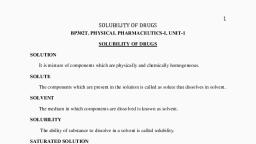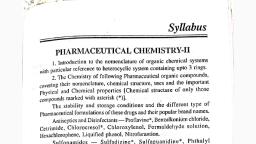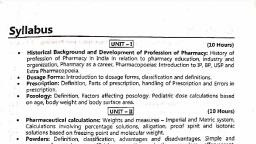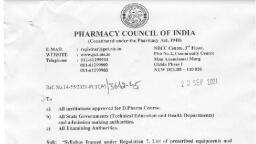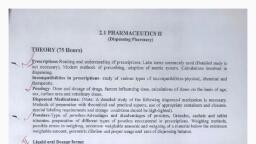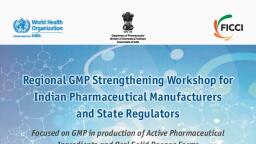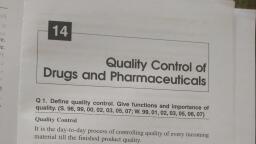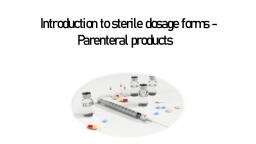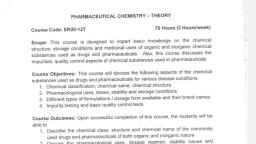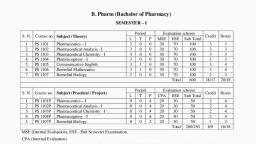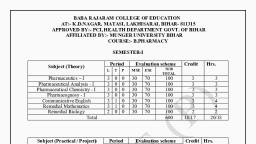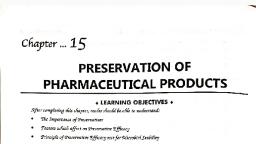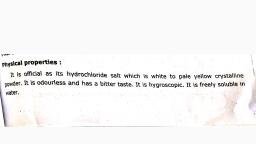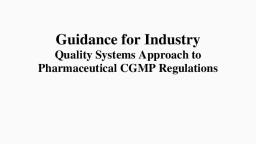Page 1 :
Annex 10, Stability testing of active pharmaceutical ingredients and, finished pharmaceutical products, Introduction and background, The guidance on Stability testing of active pharmaceutical ingredients and, finished pharmaceutical products was published as Annex 2 in the World Health, Organization (WHO) Technical Report Series, No. 953, 2009 (1)., The aim of these regulatory guidelines is to outline the core stability data, package required for registration of active pharmaceutical ingredients (APIs) and, finished pharmaceutical products (FPPs), replacing the previous WHO guidelines, in this area. The guidelines cross-refer to the series of related documents published, by the International Council for Harmonisation of Technical Requirements for, Pharmaceuticals for Human Use (ICH) (2) and other WHO guidelines., It was recommended that at the time of their publication these guidelines, should also be applied to products that are already being marketed, making, allowance for an appropriate transition period, for example, they could become, applicable upon re-registration or upon re-evaluation., The 2009 guidance not only followed the usual consultation process, but, it was also the result of numerous discussions with the various regulatory forums,, including ICH. As a result, the ICH parties withdrew one of their guidance texts, (Q1F) and published the following text on their website:, “Explanatory Note on the Withdrawal of ICH Q1F for the ICH Website, , ICH Q1 F Stability Data Package for Registration Applications in Climatic Zones, III and IV defined storage conditions for stability testing in countries located in, Climatic Zones III (hot and dry) and IV (hot and humid), i.e. countries not located, in the ICH regions and not covered by ICH Q1 A (R2) Stability Testing for New, Drug Substances and Drug Products. ICH Q1 F described harmonised global, stability testing requirements in order to facilitate access to medicines by reducing, the number of different storage conditions. In the course of the discussions which, led to the development of the guideline, WHO conducted a survey amongst their, member states to find consensus on 30 °C/65% [relative humidity] RH as the longterm storage conditions for hot and humid regions. As no significant objections, were raised in this survey, 30 °C/65% RH was defined as the long-term storage, condition for Climatic Zone III/IV countries in ICH Q1F. The document was adopted, by the ICH Steering Committee in February 2003 and subsequently implemented, in the ICH regions., 309
Page 2 :
WHO Expert Committee on Specifications for Pharmaceutical Preparations Fifty-second report, , However, based on new calculations and discussions, some countries in Climatic, Zone IV have expressed their wish to include a larger safety margin for medicinal, products to be marketed in their region than foreseen in ICH Q1F. As a consequence,, several countries and regions have revised their own stability testing guidelines,, defining up to 30 °C/75% RH as the long-term storage conditions for hot and, humid regions. Due to this divergence in global stability testing requirements, the, ICH Steering Committee has decided to withdraw ICH Q1F and to leave definition, of storage conditions in Climatic Zones III and IV to the respective regions and, WHO (http://www.who.int/medicines/areas/quality_safety/quality_assurance/, regulatory_standards/en/)., In assessing the impact of the withdrawal of ICH Q1F on intermediate testing, conditions defined in ICH Q1A (R2), the decision was reached to retain, 30 °C/65%RH. However, regulatory authorities in the ICH regions have agreed, that the use of more stringent humidity conditions such as 30 °C/75% RH will be, acceptable should the applicant decide to use them.” 1, , WHO Technical Report Series, No. 1010, 2018, , Based on recent developments, an analysis was commissioned to evaluate, whether the existing guidelines would need to be updated., During the joint meeting on regulatory guidance for multisource, products with the Medicines Quality Assurance Group and the Prequalification, of Medicines Team assessment group held in Copenhagen from 8 to 9 July 2016,, this analysis was discussed in detail and feedback provided by the participants, on the report as well as on the various sections of the existing guidelines. In, conclusion the participants agreed that a revision of this text would be timely., , 310, , 1, , http://www.ich.org/fileadmin/Public_Web_Site/ICH_Products/Guidelines/Quality/Q1F/Q1F_Explanatory_, Note.pdf.
Page 3 :
Annex 10, , 1., , Introduction, 1.1, 1.2, 1.3, , 2., , Guidelines, 2.1, , 2.2, , 3., , Objectives of these guidelines, Scope of these guidelines, General principles, Active pharmaceutical ingredient, 2.1.1 General, 2.1.2 Stress testing, 2.1.3 Selection of batches, 2.1.4 Container-closure system, 2.1.5 Specification, 2.1.6 Testing frequency, 2.1.7 Storage conditions, 2.1.8 Stability commitments, 2.1.9 Evaluation, 2.1.10 Statements and labelling, 2.1.11 Ongoing stability studies, Finished pharmaceutical product, 2.2.1 General, 2.2.2 Stress testing, 2.2.3 Selection of batches, 2.2.4 Container-closure system, 2.2.5 Specification, 2.2.6 Testing frequency, 2.2.7 Storage conditions, 2.2.8 Stability commitments, 2.2.9 Evaluation, 2.2.10 Statements and labelling, 2.2.11 In-use and hold time stability, 2.2.12 Variations, 2.2.13 Ongoing stability studies, , Glossary, , 312, 312, 312, 312, 313, 313, 313, 313, 314, 314, 315, 315, 315, 318, 319, 320, 320, 321, 321, 322, 322, 323, 323, 324, 324, 330, 330, 332, 332, 333, 334, 335, , References, , 341, , Appendix 1, , Examples of testing parameters, , 343, , Appendix 2, , Recommended labelling statements, , 347, , Appendix 3, , Interpretation of storage statements for products approved in climatic, zone II when the products are to be distributed in zone IV, , 350, , 311
Page 4 :
WHO Expert Committee on Specifications for Pharmaceutical Preparations Fifty-second report, , 1. Introduction, 1.1, , Objectives of these guidelines, , The aim of these guidelines is to outline the core stability data package required, for registration of active pharmaceutical ingredients (APIs) and finished, pharmaceutical products (FPPs), replacing the previous WHO guidelines, in this area (1). However, alternative approaches can be used when they are, scientifically justified. Further guidance can be found in guidelines published, by the International Council for Harmonisation of Technical Requirements, for Pharmaceuticals for Human Use (ICH) (2), in the WHO Guidelines on, submission of documentation for a multisource (generic) finished pharmaceutical, product: quality part (3), WHO Guidelines on submission of documentation, for a multisource (generic) finished pharmaceutical product for the WHO, Prequalification of Medicines Programme: quality part (4) and WHO guidelines, on the active pharmaceutical ingredient master file procedure (5)., It is recommended that these guidelines should also be applied to, products that are already being marketed, for example, upon re-registration or, upon re-evaluation., 1.2, , Scope of these guidelines, , WHO Technical Report Series, No. 1010, 2018, , These guidelines apply to new and existing APIs and address information to be, submitted in original and subsequent applications for marketing authorization, of their related FPP for human use. These guidelines may generally apply to, stability testing for biologicals; however, there are additional requirements, specific to such products and further guidance can be found in ICH guideline, Q5C (2)., , 312, , 1.3, , General principles, , The purpose of stability testing is to provide evidence of how the quality of an, API or FPP varies with time under the influence of a variety of environmental, factors such as temperature, humidity and light. The stability testing programme, also includes the study of product-related factors that influence its quality, for, example, interaction of the API with excipients, container-closure systems and, packaging materials. In fixed-dose combination FPPs (fixed-dose combinations, (FDCs)) the interaction between two or more APIs also has to be considered., As a result of stability testing, a retest period for the API (in exceptional, cases, for example, for unstable APIs, a shelf life is given) or a shelf life for the, FPP can be established and storage conditions can be recommended. An API, can be considered unstable (under the conditions studied, in a particular type of, packaging, etc.) when a significant change is observed.
Page 5 :
Annex 10, , Various analyses have been done to identify suitable testing conditions, for WHO Member States based on climatic data, to enable each Member State, to decide on long-term (real-time) stability testing conditions. Those Member, States that have notified WHO of the long-term stability testing conditions they, require when requesting a marketing authorization are listed in “Long-term, stability testing conditions as identified by WHO Member States”. 2, , 2. Guidelines, 2.1, , Active pharmaceutical ingredient, , 2.1.1, , General, , Information on the stability of the API is an integral part of the systematic, approach to stability evaluation. Potential attributes to be studied during stability, testing of an API are listed in the examples of testing parameters (Appendix 1)., The selection of potential attributes and time points to be tested should be, justified., The retest period or shelf life assigned to the API by the API manufacturer, should be derived from stability testing data., 2.1.2, , Stress testing, , Stress testing of the API can help identify the likely degradation products, which, in turn can help establish the degradation pathways and the intrinsic stability, of the molecule and validate the stability-indicating power of the analytical, procedures used. The nature of the stress testing will depend on the individual, API and the type of FPP involved., For an API the following approaches may be used:, –– when available, it is acceptable to provide the relevant data, published in the scientific literature to support the identified, degradation products and pathways;, –– when no published data are available, stress testing should be, performed., Stress testing may be carried out on a single batch of the API. It should, include the effect of temperature (in 10 °C increments (for example, at 50 °C,, 60 °C) above the temperature used for accelerated testing), humidity (for example,, , 2, , http://www.who.int/medicines/areas/quality_safety/quality_assurance/, StabilityConditionsTable2UupdatedMarch2015.pdf?ua=1, accessed 1 March 2017., 313
Page 6 :
WHO Expert Committee on Specifications for Pharmaceutical Preparations Fifty-second report, , 75% relative humidity (RH) or greater) and, where appropriate, oxidation and, photolysis of the API. The testing should also evaluate the susceptibility of the, API to hydrolysis across a justified range of pH values when in solution or, suspension (6)., Assessing the necessity for photostability testing should be an integral, part of a stress testing strategy. More details can be found in other guidelines (2)., The objective of stress testing is to identify primary degradation products, and not to completely degrade the API. The conditions studied should cause, degradation to occur to a small extent, typically 10–30% loss of API as determined, by assay when compared with non-degraded API. The target should be chosen so, that some degradation occurs, but not enough to generate secondary products., For this reason, the conditions and duration may need to be varied when the, API is especially susceptible to a particular stress factor. In the total absence, of degradation products after 10 days the API is considered stable under the, particular stress condition. However, in this case the stress conditions employed, should be justified., Although examining degradation products under stress conditions, is useful in establishing degradation pathways and developing and validating, suitable analytical procedures, it may not be necessary to examine specifically, for certain degradation products if it has been demonstrated that they are not, formed under accelerated or long-term storage conditions., Results from these studies will form an integral part of the information, provided to regulatory authorities., , WHO Technical Report Series, No. 1010, 2018, , 2.1.3, , 314, , Selection of batches, , The requirements that follow are not intended to apply to variations; these are, covered in section 2.2.12 Variations., Data from stability studies on at least three primary batches of the API, should normally be provided. The batches should be manufactured at a minimum, of pilot scale by the same synthesis route as production batches, and using a, method of manufacture and a procedure that simulates the final process to be, used for production batches. The overall quality of the batches of API placed on, stability studies should be representative of the quality of the material to be made, on a production scale., Other supporting data can be provided., 2.1.4, , Container-closure system, , The stability studies should be conducted on the API packaged in a containerclosure system that is the same as, or simulates, the packaging proposed for, storage and distribution.
Page 7 :
Annex 10, , 2.1.5, , Specification, , Stability studies should include testing of stability-indicating attributes of the, API, i.e. those that are susceptible to change during storage and are likely to, influence quality, safety and/or efficacy. The testing should cover, as appropriate,, the physical, chemical, biological and microbiological attributes. A guide to the, potential attributes to be tested in the stability studies is provided in Appendix 1., Validated stability-indicating analytical procedures should be applied., Whether and to what extent replication should be performed will depend on the, results from validation studies (7, 8)., 2.1.6, , Testing frequency, , For long-term studies, the frequency of testing should be sufficient to establish, the stability profile of the API., For APIs with a proposed retest period or shelf life of at least 12 months,, the frequency of testing at the long-term storage condition should normally be, every three months over the first year, every six months over the second year,, and annually thereafter throughout the proposed retest period or shelf life., At the accelerated storage condition, a minimum of three time points,, including the initial and final time points (e.g. 0, 3 and 6 months), from a sixmonth study is recommended. Where it is expected (based on development, experience) that results from accelerated studies are likely to approach significant, change criteria, additional testing should be conducted either by adding samples, at the final time point or by including a fourth time point in the study design., When testing at the intermediate storage condition is called for as a result of, significant change at the accelerated storage condition, a minimum of four time, points, including the initial and final time points (e.g. 0, 6, 9 and 12 months),, from a 12-month study is recommended., 2.1.7, , Storage conditions, , In general, an API should be evaluated under storage conditions (with appropriate, tolerances) that test its thermal stability and, if applicable, its sensitivity to, moisture. The storage conditions and the lengths of studies chosen should be, sufficient to cover storage and shipment., Storage condition tolerances are defined as the acceptable variations, in temperature and RH of storage facilities for stability studies. The equipment, used should be capable of controlling the storage conditions within the ranges, defined in these guidelines. The storage conditions should be monitored and, recorded. Short-term environmental changes due to opening the doors of the, storage facility are accepted as unavoidable. The effect of excursions due to, equipment failure should be assessed, addressed and reported if judged to affect, 315
Page 8 :
WHO Technical Report Series, No. 1010, 2018, , WHO Expert Committee on Specifications for Pharmaceutical Preparations Fifty-second report, , 316, , stability results. Excursions that exceed the defined tolerances for more than, 24 hours should be described in the study report and their effects assessed., The following requirements for data at the time of submission are not, generally intended to apply to variations; instead see section 2.2.12 Variations., For new APIs, the long-term testing should normally have taken place over a, minimum of 12 months for the number of batches specified in section 2.1.3 at, the time of submission, and should be continued for a period of time sufficient, to cover the proposed retest period or shelf life. For existing APIs, data covering, a minimum of six months may be submitted. Additional data accumulated, during the period while the registration application is being assessed should be, submitted to the authorities when submitting data in response to outstanding, questions. Data from the accelerated storage condition and, if appropriate,, from the intermediate storage condition, can be used to evaluate the effect of, short‑term excursions outside the label storage conditions (such as might occur, during shipping)., Long-term, accelerated and, where appropriate, intermediate storage, conditions for APIs are detailed in sections 2.1.7.1–2.1.7.3. The general case, applies if the API is not specifically covered by a subsequent section. Alternative, storage conditions can be used if justified., If long-term studies are conducted at 25 °C ± 2 °C/60% RH ± 5% RH, and “significant change” occurs at any time during six months’ testing at the, accelerated storage condition, additional testing at the intermediate storage, condition should be conducted and evaluated against significant change criteria., In this case, testing at the intermediate storage condition should include all, long‑term tests, unless otherwise justified, and the initial application should, include a minimum of six months’ data from a 12-month study at the intermediate, storage condition., “Significant change” for an API is defined as failure to meet its, specification., 2.1.7.1, , General case, , Study, , Storage condition, , Minimum time period, covered by data at, submission, , Long-terma, , 25 °C ± 2 °C/60% RH ± 5% RH or, 30 °C ± 2 °C/65% RH ± 5% RH or, 30 °C ± 2 °C/75% RH ± 5% RH, , 12 months or 6 months as, described in point 2.1.7, , Intermediate b, , 30 °C ± 2 °C/65% RH ± 5% RH, , 6 months
Page 9 :
Annex 10, , Table continued, , a, , b, , Study, , Storage condition, , Minimum time period, covered by data at, submission, , Accelerated, , 40 °C ± 2 °C/75% RH ± 5% RH, , 6 months, , Whether long-term stability studies are performed at 25 °C ± 2 °C/60% RH ± 5% RH or 30 °C ± 2 °C/65% RH ±, 5% RH or 30 °C ± 2 °C/75% RH ± 5% RH is determined by the climatic condition under which the API is intended, to be stored (see “Long-term stability testing conditions as identified by WHO Member States”). Testing at a more, severe long-term condition can be an alternative to testing condition, i.e. 25 °C/60% RH or 30 °C/65% RH for, zone II., If 30 °C ± 2 °C/65% RH ± 5% RH or 30 °C ± 2 °C/75% RH ± 5% RH is the long-term condition there is no, intermediate condition., , 2.1.7.2, , Active pharmaceutical ingredients intended for storage in a refrigerator, , Study, , Storage condition, , Minimum time period, covered by data at, submission, , Long-term, , 5 °C ± 3 °C, , 12 months or 6 months as, referred to in section 2.1.7, , Accelerateda, , 25 °C ± 2 °C/60% RH ± 5% RH or, 30 °C ± 2 °C/65% RH ± 5% RH or, 30 °C ± 2 °C/75% RH ± 5% RH, , 6 months, , a Whether accelerated stability studies are performed at 25 °C ± 2 °C/60% RH ± 5% RH or 30 °C ± 2 °C/65% RH ±, 5% RH or 30 °C ± 2 °C/75% RH ± 5% RH is based on a risk-based evaluation. Testing at a more severe accelerated, condition can be an alternative to storage testing at 25 °C/60% RH or 30 °C/65% RH., , Data on refrigerated storage should be assessed according to the evaluation, section of these guidelines, except where explicitly noted below., If significant change occurs between three and six months’ testing at the, accelerated storage condition, the proposed retest period should be based on, the data available at the long-term storage condition., If significant change occurs within the first three months’ testing at the accelerated, storage condition a discussion should be provided addressing the effect of shortterm excursions outside the label storage condition, e.g. during shipping or, handling. This discussion can be supported, if appropriate, by further testing on, a single batch of the API for a period shorter than three months but with more, frequent testing than usual. It is considered unnecessary to continue to test an, API for the whole six months when a significant change has occurred within the, first three months., 317
Page 10 :
WHO Expert Committee on Specifications for Pharmaceutical Preparations Fifty-second report, , 2.1.7.3, , Active pharmaceutical ingredients intended for storage in a freezer, , Study, , Storage condition, , Minimum time period covered by, data at submission, , Long-term, , −20 °C ± 5 °C, , 12 months or 6 months as referred to, in section 2.1.7, , In the rare case of any API of nonbiological origin being intended for storage in, a freezer, the retest period or shelf life should be based on the long-term data, obtained at the long-term storage condition. In the absence of an accelerated, storage condition for APIs intended to be stored in a freezer, testing on a single, batch at an elevated temperature (e.g. 5 °C ± 3 °C or 25 °C ± 2 °C or 30 °C ± 2 °C), for an appropriate time period should be conducted to address the effect of, short-term excursions outside the proposed label storage condition, e.g. during, shipping or handling., 2.1.7.4, , Active pharmaceutical ingredients intended for storage below −20 °C, , APIs intended for storage below −20 °C should be treated on a case-by-case basis., , WHO Technical Report Series, No. 1010, 2018, , 2.1.8, , 318, , Stability commitments, , When the available long-term stability data on primary batches do not cover the, proposed retest period or shelf life granted at the time of approval, a commitment, should be made to continue the stability studies post-approval in order to firmly, establish the retest period or shelf life., Where the submission includes long-term stability data on three, production batches covering the proposed retest period or shelf life, a postapproval commitment is considered unnecessary. Otherwise one of the following, commitments should be made:, –– if the submission includes data from stability studies on three, production batches, a commitment should be made to continue, these studies through the proposed retest period or shelf life;, –– if the submission includes data from stability studies on fewer, than three production batches, a commitment should be made to, continue these studies through the proposed retest period and to, place additional production batches, up to a total of at least three,, in long-term stability studies through the proposed retest period, or shelf life;, –– if the submission does not include stability data on production, batches, a commitment should be made to place the first three
Page 11 :
Annex 10, , production batches (see section 2.1.3) on long-term stability studies, through the proposed retest period or shelf life., The stability protocol used for long-term studies for the stability commitment, should be the same as that for the primary batches, unless otherwise scientifically, justified., See also 2.1.11 Ongoing stability studies., 2.1.9, , Evaluation, , The primary stability programme should be described in a written protocol and, the results presented in a formal report as outlined in 2.1.11., The purpose of the stability study is to establish – based on testing, a minimum of three batches of the API, unless otherwise justified, and, evaluating the stability information (including, as appropriate, results of the, physical, chemical, biological and microbiological tests) – a retest period, or shelf life applicable to all future batches of the API manufactured under, similar circumstances. The degree of variability of individual batches affects, the confidence that a future production batch will remain within specification, throughout the assigned retest period or shelf life., The data may show so little degradation and so little variability that it is, apparent from looking at them that the requested retest period or shelf life will, be granted. Under these circumstances it is normally unnecessary to go through, the statistical analysis., One approach for analysing the data on a quantitative attribute that is, expected to change with time is to determine the time at which the 95% onesided confidence limit for the mean curve intersects the acceptance criterion. If, analysis shows that the batch-to-batch variability is small, it is advantageous to, combine the data into one overall estimate. This can be done by first applying, appropriate statistical tests (e.g. P values for level of significance of rejection of, more than 0.25) to the slopes of the regression lines and zero time intercepts for, the individual batches. If it is inappropriate to combine data from several batches,, the overall retest period or shelf life should be based on the minimum time a, batch can be expected to remain within acceptance criteria., The nature of any degradation relationship will determine whether, the data should be transformed for linear regression analysis. Usually the, relationship can be represented by a linear, quadratic or cubic function on an, arithmetic or logarithmic scale. As far as possible the choice of model should, be justified by a physical and/or chemical rationale and should also take into, account the amount of available data (parsimony principle to ensure a robust, prediction). Statistical methods should be employed to test the goodness of, fit of the data on all batches and combined batches (where appropriate) to the, assumed degradation line or curve., 319
Page 12 :
WHO Expert Committee on Specifications for Pharmaceutical Preparations Fifty-second report, , Limited extrapolation of the long-term data from the long-term storage, condition beyond the observed range to extend the retest period or shelf life can, be undertaken if justified. This justification should be based on what is known, about the mechanism of degradation, the results of testing under accelerated, conditions, the goodness of fit of any mathematical model, batch size and, existence of supporting stability data. However, this extrapolation assumes that, the same degradation relationship will continue to apply beyond the observed, data (please refer to ICH Q1E)., Any evaluation should cover not only the assay but also the levels of, degradation products and other stability-indicating attributes., , WHO Technical Report Series, No. 1010, 2018, , 2.1.10, , 320, , Statements and labelling, , A storage statement should be established for display on the label based on the, stability evaluation of the API. Where applicable, specific instructions should, be provided, particularly for APIs that cannot tolerate freezing or excursions in, temperature. Terms such as “ambient conditions” or “room temperature” should, be avoided., The recommended labelling statements for use when supported by the, stability studies are provided in Appendix 2., A retest period should be derived from the stability information, and a, retest date should be displayed on the container label if appropriate., After this retest period a batch of API destined for use in the manufacture, of an FPP could be retested and then, if in compliance with the specification,, could be used immediately (e.g. within 30 days). If retested and found, compliant, the batch does not receive an additional period corresponding to, the time established for the retest period. However, an API batch can be retested, multiple times and a different portion of the batch used after each retest, as long, as it continues to comply with the specification. For APIs known to be labile, (e.g. certain antibiotics) it is more appropriate to establish a shelf life than a, retest period., 2.1.11, , Ongoing stability studies, , The stability of the API should be monitored according to a continuous and, appropriate programme that will permit the detection of any stability issue (e.g., changes in levels of degradation products). The purpose of the ongoing stability, programme is to monitor the API and to determine that the API remains, and, can be expected to remain, within specifications under the storage conditions, indicated on the label, within the retest period or shelf life in all future batches., The ongoing stability programme should be described in a written, protocol and the results presented in a formal report that should be available, on site.
Page 13 :
Annex 10, , The protocol for an ongoing stability programme should extend to the, end of the retest period or shelf life and should include, but not be limited to,, the following parameters:, –– number of batch(es) and different batch sizes, if applicable;, –– relevant physical, chemical, microbiological and biological test, parameters with acceptance criteria or reference to the attached, specifications;, –– reference to test methods;, –– description of the container-closure system(s);, –– testing frequency;, –– description of the conditions of storage (standardized conditions for, long-term testing as described in these guidelines, and consistent, with the API labelling, should be used);, –– other applicable parameters specific to the API., At least one production batch per year of API (unless none is produced, during that year) should be added to the stability monitoring programme and, generally should be tested at least every 6 months in the first year and then, annually to confirm the stability (7)., In certain situations additional batches should be included in the stability, programme and may require more frequent testing. For example, a stability study, should be initiated after any significant change or significant deviation of the, synthetic route, process or container-closure system that may have an impact, upon the stability of the API (refer to section 2.2.12 Variations)., Out-of-specification (OOS) results or significant atypical trends should be, investigated. Any confirmed significant change or OOS result should be reported, immediately to the relevant finished product manufacturer. The possible impact, on batches on the market should be considered in consultation with the relevant, finished product manufacturers and the competent authorities., A summary of all the data generated, including any interim conclusions, on the programme, should be written and maintained and should be available, on site. This summary should be subjected to periodic review., 2.2, , Finished pharmaceutical product, , 2.2.1, , General, , The design of the stability studies for the FPP should be based on knowledge, of the behaviour and properties of the API, information from stability studies, on the API and on experience gained from preformulation studies, similar, marketed formulations and investigational FPPs. The likely changes during, 321
Page 14 :
WHO Expert Committee on Specifications for Pharmaceutical Preparations Fifty-second report, , storage and the rationale for the selection of attributes to be tested in the stability, studies should be stated., 2.2.2, , Stress testing, , Photostability testing, which is an integral part of stress testing, should be, conducted on at least one primary batch of the FPP if appropriate. More details, can be found in other guidelines (2)., Additional stress testing of specific types of dosage forms may be, appropriate, e.g. cyclic studies for semi-solid products or freeze–thaw studies for, liquid products., , WHO Technical Report Series, No. 1010, 2018, , 2.2.3, , 322, , Selection of batches, , The requirements that follow are not generally intended to apply to variations,, which are covered in section 2.2.12 Variations., For FPPs containing new APIs, data from stability studies should be, provided on at least three primary batches of each proposed strength of the FPP., Two of the three batches should be at least pilot-scale batches and the third, batch can be smaller, if justified (see example below)., For FPPs containing existing APIs (e.g. generics), data should be, provided on not less than two batches of at least pilot scale, or in the case of an, uncomplicated 3 FPP (e.g. immediate-release solid FPPs (with noted exceptions), or non-sterile solutions), at least one batch of at least pilot scale and a second, batch which may be smaller (e.g. for solid oral dosage forms, 25 000 or 50 000, tablets or capsules) of each proposed strength of the FPP., The primary batches should be of the same formulation and packaged, in the same container-closure system as that proposed for marketing. The, manufacturing process used for primary batches should simulate that to be, applied to production batches and should provide product of the same quality, and meeting the same specification as that intended for marketing., When a batch size smaller than pilot scale is used as a primary batch,, data or a discussion is required to confirm that the smaller batch is representative, of the intended production size, including its formulation and method of, manufacture., Where possible, batches of the FPP should be manufactured using, different batches of the API(s)., , 3, , The term “complicated FPP” includes sterile products, metered dose inhaler products, dry powder inhaler, products and transdermal delivery systems. Solid oral products considered “complicated” include modifiedrelease FPPs, products containing problematical APIs such as ritonavir and FDCs containing APIs such as, rifampicin or an artemisinin.
Page 15 :
Annex 10, , Stability studies should be performed on each individual strength, dosage, form and container type and size of the FPP unless bracketing or matrixing is, applied (refer to ICH Q1D)., 2.2.4, , Container-closure system, , Stability testing should be conducted on the dosage form packaged in the, primary container-closure systems proposed for marketing. If the secondary, container-closure system has protective properties, and labelling clearly indicates, that the product is to be stored in the primary and secondary packaging (e.g., “store tablets in blisters in the provided cartons”), or if the product is packaged, in a semi-permeable container where components from the secondary packaging, can migrate into the product, the secondary packaging may also form part of the, packaging system for stability samples. Any available studies carried out on the, FPP outside its immediate container or in other packaging materials can form, a useful part of the stress testing of the dosage form or can be considered as, supporting information, respectively., 2.2.5, , Specification, , Stability studies should include testing of stability-indicating attributes of the, FPP, i.e. those that are susceptible to change during storage and are likely to, influence quality, safety and/or efficacy. The testing should cover, as appropriate,, the physical, chemical, biological and microbiological attributes, preservative, content (e.g. antioxidant or antimicrobial preservatives) and functionality tests, (e.g. for a dose delivery system). Examples of testing parameters in the stability, studies are listed in Appendix 1. Analytical procedures should be fully validated, and stability-indicating. Whether and to what extent replication should be, performed will depend on the results of validation studies., Shelf-life acceptance criteria should be derived from consideration, of all available stability information. It may be appropriate to have justifiable, differences between the shelf-life and release acceptance criteria based on the, stability evaluation and the changes observed on storage. Any differences, between the release and shelf-life acceptance criteria for antimicrobial, preservative content should be supported by a validated correlation of chemical, content and preservative effectiveness demonstrated during development of, the pharmaceutical product with the product in its final formulation (except, for preservative concentration) intended for marketing. A single primary, stability batch of the FPP should be tested for effectiveness of the antimicrobial, preservative (in addition to preservative content) at the proposed shelf life for, verification purposes, regardless of whether there is a difference between the, release and shelf-life acceptance criteria for preservative content., 323
Page 16 :
WHO Expert Committee on Specifications for Pharmaceutical Preparations Fifty-second report, , 2.2.6, , Testing frequency, , For long-term studies, frequency of testing should be sufficient to establish the, stability profile of the FPP., For products with a proposed shelf life of at least 12 months, the, frequency of testing at the long-term storage condition should normally be, every three months over the first year, every six months over the second year and, annually thereafter throughout the proposed shelf life., At the accelerated storage condition, a minimum of three time points,, including the initial and final time points (e.g. 0, 3 and 6 months), from a sixmonth study is recommended. Where an expectation (based on development, experience) exists that results from accelerated testing are likely to approach, significant change criteria, testing should be increased either by adding samples, at the final time point or by including a fourth time point in the study design., When testing at the intermediate storage condition is called for as a, result of significant change at the accelerated storage condition, a minimum, of four time points, including the initial and final time points (e.g. 0, 6, 9 and, 12 months), from a 12-month study is recommended., The initial date of storage should be considered t0 and stability time, points should be defined as a date with respect to t0. For example, if t0 is, 1 January 2020 then the one-month time point corresponds to either 1 February, or 31 January 2020. For each time point, samples should be withdrawn and, tested as per the protocol. Testing should be completed as soon as possible., Deviations from the protocol should be recorded and justified., Reduced designs, i.e. matrixing or bracketing, where the testing, frequency is reduced or certain factor combinations are not tested at all, can be, applied if justified (refer to ICH Q1D)., , WHO Technical Report Series, No. 1010, 2018, , 2.2.7, , 324, , Storage conditions, , Stability data must demonstrate stability of the medicinal product throughout, its intended shelf life under the climatic conditions prevalent in the target, countries. Merely applying the same requirements appropriate to other markets, could potentially lead to substandard products if stability studies are conducted, at the storage conditions for countries in Climatic Zone I/II when the products, are supplied in countries in Climatic Zones III and IV., In general an FPP should be evaluated under storage conditions with, specified tolerances that test its thermal stability and, if applicable, its sensitivity, to moisture or potential for solvent loss. The storage conditions and the lengths, of studies chosen should be sufficient to cover storage, shipment and subsequent, use with due regard to the climatic conditions in which the product is intended, to be marketed., The orientation of the product during storage, i.e. upright, on the side or, inverted, as well as the rationale for the orientation, may need to be included in a
Page 17 :
Annex 10, , protocol where contact of the product with the closure system may be expected, to affect the stability of the products contained (e.g. liquids and semisolids), or, where there has been a change in the container-closure system., Storage condition tolerances are usually defined as the acceptable, variations in temperature and RH of storage facilities for stability studies. The, equipment used should be capable of controlling the storage conditions within, the ranges defined in these guidelines. The storage conditions should be, monitored and recorded. Short-term environmental changes due to opening, of the doors of the storage facility are accepted as unavoidable. The effect of, excursions due to equipment failure should be assessed, addressed and reported, if judged to affect stability results. Excursions that exceed the defined tolerances, for more than 24 hours should be described in the study report and their, effects assessed., The following requirements for data at the time of submission are, not generally intended to apply to variations; instead refer to section 2.2.12, Variations. At the time of submission, the long-term testing should cover a, minimum of six months for FPPs containing existing APIs or 12 months for FPPs, containing new APIs and should be continued for a period of time sufficient to, cover the proposed shelf life. The period of data collection required at the time, of submission may be shortened in some circumstances, for example, to address, shortages of medicines., Additional data accumulated during the assessment period of the, registration application should be submitted to the authorities when submitting, data in response to outstanding questions. Data from the accelerated storage, condition and from the intermediate conditions, where appropriate, can be, used to evaluate the effect of short-term excursions outside the label storage, conditions (such as might occur during shipping)., Long-term, accelerated and, where appropriate, intermediate storage, conditions for FPPs are detailed in the sections below. The general case applies if, the FPP is not specifically covered by a subsequent section. Alternative storage, conditions can be used if justified., 2.2.7.1, , General case, , Study, , Storage condition, , Minimum time period, covered by data at, submission, , Long-terma, , 25 °C ± 2 °C/60% RH ± 5% RH or, 30 °C ± 2 °C/65% RH ± 5% RH or, 30 °C ± 2 °C/75% RH ± 5% RH, , 12 months or 6 months as, referred to in section 2.2.7, , 325
Page 18 :
WHO Expert Committee on Specifications for Pharmaceutical Preparations Fifty-second report, , Table continued, Study, , Storage condition, , Minimum time period, covered by data at, submission, , Intermediate b, , 30 °C ± 2 °C/65% RH ± 5% RH, , 6 months, , Accelerated, , 40 °C ± 2 °C/75% RH ± 5% RH, , 6 months, , a Whether long-term stability studies are performed at 25 °C ± 2 °C/60% RH ± 5% RH or 30 °C ± 2 °C/65% RH ±, 5% RH or 30 °C ± 2 °C/75% RH ± 5% RH is determined by the climatic zone in which the FPP is intended to be, marketed. Testing at a more severe long-term condition can be an alternative to storage at 25 °C/60% RH or, 30 °C/65% RH., b, If 30 °C ± 2 °C/65% RH ± 5% RH or 30 °C ± 2 °C/75% RH ± 5% RH is the long-term condition, there is no, intermediate condition., , WHO Technical Report Series, No. 1010, 2018, , If long-term studies are conducted at 25 °C ± 2 °C/60% RH ± 5% RH and, “significant change” occurs at any time during 6 months’ testing at the accelerated, storage condition, additional testing at the intermediate storage condition, should be conducted and evaluated against significant change criteria. In this, case the initial application should include a minimum of six months’ data from a, 12-month study at the intermediate storage condition., In general, “significant change” for an FPP is defined as:, , 326, , –– a change from the initial content of API(s) of 5% or more detected, by assay, or failure to meet the acceptance criteria for potency when, using biological or immunological procedures;, –– any degradation product exceeding its acceptance criterion;, –– failure to meet the acceptance criteria for appearance, physical, attributes and functionality test (e.g. colour, phase separation,, resuspendability, caking, hardness, dose delivery per actuation)., However, some changes in physical attributes (e.g. softening of, suppositories, melting of creams, partial loss of adhesion for, transdermal products) may be expected under accelerated conditions., Also, as appropriate for the dosage form:, –– failure to meet the acceptance criterion for pH; or, –– failure to meet the acceptance criteria for dissolution for 12 dosage, units., 2.2.7.2, , FPPs packaged in impermeable containers, , Parameters required to classify the packaging materials as permeable or, impermeable depend on the characteristics of the packaging material, such
Page 19 :
Annex 10, , as sealing, thickness and permeability coefficient. The suitability of the, packaging material used for a particular product is determined by its product, characteristics. Containers generally considered to be moisture-impermeable, include glass ampoules., Sensitivity to moisture or potential for solvent loss is not a concern for, FPPs packaged in impermeable containers that provide a permanent barrier, to passage of moisture or solvent. Thus stability studies for products stored in, impermeable containers can be conducted under any controlled or ambient RH, condition., 2.2.7.3, , FPPs packaged in semi-permeable containers, , Aqueous-based products packaged in semi-permeable containers should be, evaluated for potential water loss in addition to physical, chemical, biological and, microbiological stability. This evaluation can be carried out under conditions of, low RH, as discussed below. Ultimately it should be demonstrated that aqueousbased FPPs stored in semi-permeable containers could withstand environments, with low RH., Other comparable approaches can be developed and reported for nonaqueous, solvent-based products., Study, , Storage condition, , Minimum time period, covered by data at, submission, , Long-terma, , 25 °C ± 2 °C/40% RH ± 5% RH or, 30 °C ± 2 °C/35% RH ± 5% RH, , 12 months or 6 months as, referred to in section 2.2.7, , Intermediate b, , 30 °C ± 2 °C/35% RH ± 5% RH, , 6 months, , Accelerated, , 40 °C ± 2 °C/not more than (NMT), 25% RH, , 6 months, , a Whether long-term stability studies are performed at 25 °C ± 2 °C/40% RH ± 5% RH or 30 °C ± 2 °C/35% RH ±, 5% RH is determined by the climatic condition under which the FPP is intended to be marketed. Testing at, 30 °C/35% RH can be an alternative to the storage condition at 25 °C/40% RH., b, If 30 °C ± 2 °C/35% RH ± 5% RH is the long-term condition, there is no intermediate condition., , Products meeting the specifications when stored under the accelerated, conditions and the long-term storage conditions appropriate to the intended, market, as specified in the table above, have demonstrated the integrity of the, packaging in semi-permeable containers. A significant change in water loss, alone at the accelerated storage condition does not necessitate testing at the, intermediate storage condition. However, data should be provided to demonstrate, 327
Page 20 :
WHO Expert Committee on Specifications for Pharmaceutical Preparations Fifty-second report, , that the pharmaceutical product would not have significant water loss throughout, the proposed shelf life if stored at 25 °C/40% RH or 30 °C/35% RH., For long-term studies conducted at 25 °C ± 2 °C/40% RH ± 5% RH, that, fail the accelerated testing with regard to water loss and show significant change, with respect to any other parameters, additional testing at the “intermediate”, storage condition should be performed as described under the general case to, evaluate the temperature effect at 30 °C., A 5% loss in water from its initial value is considered a significant change, for a product packaged in a semi-permeable container after an equivalent of, three months’ storage at 40 °C and not more than (NMT) 25% RH. However,, for small containers (1 mL or less) or unit-dose products, a water loss of 5% or, more after an equivalent of three months’ storage at 40 °C/NMT 25% RH may, be appropriate, if justified., An alternative approach to studies at the low RH as recommended in the, table above (for either long-term or accelerated testing) is to perform the stability, studies under higher RH and to derive the water loss at the low RH through, calculation. This can be achieved by experimentally determining the permeation, coefficient for the container-closure system or, as shown in the example below,, using the calculated ratio of water loss rates between the two humidity conditions, at the same temperature. The permeation coefficient for a container-closure, system can be experimentally determined by using the worst-case scenario (e.g., the most diluted of a series of concentrations) for the proposed FPP., , WHO Technical Report Series, No. 1010, 2018, , Example of an approach for determining water loss, , 328, , For a product in a given container-closure system, container size and fill, an, appropriate approach for deriving the rate of water loss at the low RH is to multiply, the rate of water loss measured at an alternative RH at the same temperature, by, a water loss rate ratio shown in the table below. A linear water loss rate at the, alternative RH over the storage period should be demonstrated., For example, at a given temperature, e.g. 40 °C, the calculated rate of, water loss during storage at NMT 25% RH is the rate of water loss measured at, 75% RH multiplied by 3.0, the corresponding water loss rate ratio., Low-humidity, testing conditions, , Alternative testing, condition, , Ratio of water, loss rates, , Calculation, , 25 °C/40% RH, , 25 °C/60% RH, , 1.5, , (100−40)/(100−60), , 30 °C/35% RH, , 30 °C/65% RH, , 1.9, , (100−35)/(100−65), , 30 °C/35% RH, , 30 °C/75% RH, , 2.6, , (100−35)/(100−75), , 40 °C/NMT 25% RH, , 40 °C/75% RH, , 3.0, , (100−25)/(100−75)
Page 21 :
Annex 10, , Valid water loss rate ratios at RH conditions other than those shown in the table, above can also be used., 2.2.7.4, , FPPs intended for storage in a refrigerator, , Study, , Storage condition, , Minimum time period, covered by data at, submission, , Long-term, , 5 °C ± 3 °C, , 12 months or 6 months as, referred to in section 2.2.7, , Accelerateda, , 25 °C ± 2 °C/60% RH ± 5% RH or, 30 °C ± 2 °C/65% RH ± 5% RH or, 30 °C ± 2 °C/75% RH ± 5% RH, , 6 months, , a Whether accelerated stability studies are performed at 25 °C ± 2 °C/60% RH ± 5% RH or 30 °C ± 2 °C/65% RH ±, 5% RH or 30 °C ± 2 °C/75% RH ± 5% RH is based on a risk-based evaluation. Testing at a more severe accelerated, condition can be an alternative to the storage condition at 25 °C/60% RH or 30 °C/65% RH., , If the FPP is packaged in a semi-permeable container, appropriate, information should be provided to assess the extent of water loss., Data from refrigerated storage should be assessed according to the, evaluation section of these guidelines, except where explicitly noted below., If significant change occurs between three and six months’ testing at the, accelerated storage condition, the proposed shelf life should be based on the, data available from the long-term storage condition., If significant change occurs within the first three months’ testing at the, accelerated storage condition, a discussion should be provided addressing the, effect of short-term excursions outside the label storage condition, e.g. during, shipment and handling. This discussion can be supported, if appropriate, by, further testing on a single batch of the FPP for a period shorter than three, months but with more frequent testing than usual. It is considered unnecessary, to continue to test a product throughout six months when a significant change, has occurred within the first three months of accelerated studies at the specific, condition chosen in accordance with the risk analysis., 2.2.7.5, , FPPs intended for storage in a freezer, , Study, , Storage condition, , Minimum time period covered by, data at submission, , Long-term, , –20 °C ± 5 °C, , 12 months or 6 months as referred, to in section 2.2.7, 329
Page 22 :
WHO Expert Committee on Specifications for Pharmaceutical Preparations Fifty-second report, , For FPPs intended for storage in a freezer, the shelf life should be based, on the long-term data obtained at the long-term storage condition. In the absence, of an accelerated storage condition for FPPs intended to be stored in a freezer,, testing on a single batch at an elevated temperature (e.g. 5 °C ± 3 °C or 25 °C, ± 2 °C or 30 °C ± 2 °C) for an appropriate time period should be conducted to, address the effect of short-term excursions outside the proposed label storage, condition., 2.2.7.6, , FPPs intended for storage below −20 °C, , FPPs intended for storage at temperatures below −20 °C should be treated on a, case-by-case basis., 2.2.8, , Stability commitments, , WHO Technical Report Series, No. 1010, 2018, , One or more of the following commitments should be made., , 330, , –– When the available long-term stability data on primary batches do, not cover the proposed shelf life granted at the time of approval, a, commitment should be made to continue the stability studies postapproval throughout the proposed shelf life. This is the primary, batch stability commitment., –– If the submission includes data from stability studies on fewer, than three production batches, a commitment should be made to, place the next production batches, up to a total of at least three, on, long-term stability studies throughout the proposed shelf life and, on accelerated studies for six months. This is the production batch, stability commitment., –– For each product, an ongoing stability programme is required, to monitor the product over its shelf life and to determine that, the product remains and can be expected to remain within, specifications under the storage conditions on the label. See 2.2.13., This is the ongoing stability commitment., The stability protocol used for studies on commitment batches should be, the same as that for the primary batches, unless otherwise scientifically justified., 2.2.9, , Evaluation, , The primary stability programme should be described in a written protocol and, the results presented in a formal report as outlined in 2.2.13., A systematic approach should be adopted to the presentation and, evaluation of the stability information, which should include, as appropriate,, results from the physical, chemical, biological and microbiological tests,
Page 23 :
Annex 10, , including particular attributes of the dosage form (e.g. dissolution rate for solid, oral dosage forms). Where appropriate, a summary of additional knowledge and, an understanding of stability gained from supporting studies, modelling, predictive, tools, etc., may be incorporated to support knowledge gained from the primary, stability programme., The purpose of the stability study is to establish, based on testing a, minimum number of batches of the FPP as specified in section 2.2.3, a shelf, life and label storage instructions applicable to all future batches of the FPP, manufactured and packaged under similar circumstances. The degree of, variability of individual batches affects the confidence that a future production, batch will remain within specification throughout its shelf life., Where the data show so little degradation and so little variability that it is, apparent from looking at the data that the requested shelf life will be granted, it, is normally unnecessary to go through the statistical analysis., One approach for analysing the data on a quantitative attribute that is, expected to change with time is to determine the time at which the 95% onesided confidence limit for the mean curve intersects the acceptance criterion. If, analysis shows that the batch-to-batch variability is small, it is advantageous to, combine the data into one overall estimate. This can be done by first applying, appropriate statistical tests (e.g. P values for level of significance of rejection of, more than 0.25) to the slopes of the regression lines and zero time intercepts, for the individual batches. If it is inappropriate to combine data from several, batches, the overall shelf life should be based on the minimum time a batch can, be expected to remain within acceptance criteria., The nature of any degradation relationship will determine whether the, data should be transformed for linear regression analysis. Usually the relationship, can be represented by a linear, quadratic or cubic function on an arithmetic or, logarithmic scale. As far as possible, the choice of model should be justified by a, physical and/or chemical rationale and should also take into account the amount, of available data (parsimony principle to ensure a robust prediction)., Statistical methods should be employed to test the goodness of fit of the, data on all batches and combined batches (where appropriate) to the assumed, degradation line or curve., Limited extrapolation of the long-term data from the long-term storage, condition beyond the observed range to extend the shelf life can be undertaken,, if justified. This justification should be based on what is known about the, mechanisms of degradation, the results of testing under accelerated conditions,, the goodness of fit of any mathematical model, batch size and the existence of, supporting stability data. However, this extrapolation assumes that the same, degradation relationship will continue to apply beyond the observed data (refer, to ICH Q1E)., 331
Page 24 :
WHO Expert Committee on Specifications for Pharmaceutical Preparations Fifty-second report, , Any evaluation should consider not only the assay but also the, degradation products and other appropriate attributes., 2.2.10, , Statements and labelling, , A storage statement should be established for the label based on the stability, evaluation of the FPP. Where applicable, specific instructions should be provided,, particularly for FPPs that cannot tolerate freezing. Terms such as “ambient, conditions” or “room temperature” should be avoided., There should be a direct link between the storage statement on the label, and the demonstrated stability of the FPP. An expiry date should be displayed on, the container label., The labelling statements recommended for use, if supported by the, stability studies, are provided in Appendix 2. Information on the interpretation, and conversion of storage statements for products approved in zone II when the, products are to be distributed in zone IV is provided in Appendix 3., In principle, FPPs should be packed in containers that ensure stability, and protect the FPP from deterioration. A storage statement should not be, used to compensate for inadequate or inferior packaging. Additional labelling, statements could be used in cases where the results of the stability testing, demonstrate limiting factors (see Appendix 2)., , WHO Technical Report Series, No. 1010, 2018, , 2.2.11, , 332, , In-use and hold time stability, , The purpose of in-use stability testing is to provide information for the labelling, on the preparation, storage conditions and utilization period of multidose, products after opening, reconstitution or dilution of a solution. Examples, include an antibiotic injection supplied as a powder for reconstitution, or a, moisture-sensitive or hygroscopic solid oral FPP in a large format multidose, container (e.g. high density polyethylene (HDPE) bottle of 500 tablets). In, general, a 30-day in-use period is normally considered acceptable without, further supporting data., As far as possible the test should be designed to simulate the use of the, FPP in practice, taking into consideration the filling volume of the container and, any dilution or reconstitution before use. At intervals comparable to those that, occur in practice, appropriate quantities should be removed by the withdrawal, methods normally used and described in the product literature., The physical, chemical and microbial properties of the FPP that are, susceptible to change during storage should be determined over the period of the, proposed in-use shelf life. If possible, testing should be performed at intermediate, time points and at the end of the proposed in-use shelf life on the final amount, of the FPP remaining in the container. Specific parameters, e.g. for liquids and, semisolids: the content and effectiveness of preservatives need to be studied.
Page 25 :
Annex 10, , A minimum of two batches, at least pilot-scale (with the exceptions, outlined in 2.2.3), should be subjected to the test. At least one of these batches, should be chosen towards the end of its shelf life. If such results are not available,, one batch should be tested at the final point of the submitted stability studies., This testing should be performed on primary batches of the reconstituted, or diluted FPP or the solid oral FPP (as above), throughout the proposed in-use, period as part of the stability studies at the initial and final time points and, if, long-term data covering the shelf life are not available at the time of submission,, at 12 months or the last time point at which data will be available., In general this testing need not be repeated on commitment batches, (see 2.2.8)., Consideration should also be given to hold-time studies of bulk products,, e.g. coated tablets prior to final packaging. For example, when the bulk product, may be stored for a period exceeding 30 days before being packaged and/or, shipped from a manufacturing site to a packaging site, the stability of the bulk, product in the intended bulk container should be evaluated and studied. Similar, considerations should apply to intermediates that are stored and used for periods, exceeding 30 days. Further guidance can be found in the WHO General guidance, on hold-time studies (9)., 2.2.12, , Variations, , Once the FPP has been registered, additional stability studies are required, whenever variations are made that may affect the stability of the API or FPP., The applicant should investigate whether or not the intended change will have, an impact on the quality characteristics of APIs and/or FPPs and consequently, on their stability. The scope and design of the stability studies for variations are, based on the knowledge and experience acquired on APIs and FPPs., The available variation guidelines should be consulted for guidance, on the expectations regarding stability requirements to support changes to, the API and FPP. Note that the requirements of the guidelines of the specific, regulatory authority or region prevail for a given region; however, in the absence, of such guidelines, the WHO Prequalification Team: Medicines guidelines can, be applied (10). Depending on the variation, either the results of a stability study, or a commitment to conduct such as study is required. Variation guidelines are, specific detailed guidelines, therefore the following are general categories and the, guidelines should be referred to for the exact circumstances and requirements., In the aforementioned guidance document (10), changes requiring supporting, data include certain changes to the API retest period or storage conditions, and, to the FPP formulation, manufacturing process, container-closure system, shelf, life, in-use period and storage conditions. Other changes, such as certain changes, to the API certificate of suitability, certificate of prequalification, manufacturing, 333
Page 26 :
WHO Expert Committee on Specifications for Pharmaceutical Preparations Fifty-second report, , site or manufacturing process, or certain changes to the FPP manufacturing site,, batch size or container-closure system, require a commitment for stability studies, to support the variations., The results of these stability studies should be communicated to the, regulatory authorities concerned, following the applicable requirements, stipulated in the variation guidelines for the region., 2.2.13, , Ongoing stability studies, , WHO Technical Report Series, No. 1010, 2018, , After a marketing authorization has been granted, the stability of the FPP should, be appropriately monitored according to a continuous programme that will, permit the detection of any stability issue (e.g. changes in levels of degradation, products or dissolution profile) associated with the formulation in the containerclosure system in which it is marketed. The purpose of the ongoing stability, programme is to monitor the product over its shelf life and to determine that, the product remains, and can be expected to remain, within specifications under, the storage conditions on the label. The ongoing stability programme should be, described in a written protocol and results formalized as a report., The protocol for an ongoing stability programme should extend to, the end of the shelf-life period and should include, but not be limited to, the, following parameters:, , 334, , –– number of batch(es) per strength and different batch sizes, if, applicable. The batch size should be recorded, if batch sizes differ;, –– relevant physical, chemical, microbiological and biological test, parameters with acceptance criteria or reference to the attached, specifications;, –– reference to test methods;, –– description of the container-closure system(s);, –– testing frequency (generally at 6 months and annual time points is, sufficient for ongoing studies);, –– description of the conditions of storage (standardized conditions for, long-term testing as described in these guidelines, and consistent, with the product labelling, should be used); and, –– other applicable parameters specific to the FPP., The protocol for the ongoing stability programme can be different, from that of the initial long-term stability study as submitted in the marketing, authorization dossier provided that this is justified and documented in the, protocol (for example, the frequency of testing as above, or when updating to, meet revised recommendations).
Page 27 :
Annex 10, , The number of batches and frequency of testing should provide sufficient, data to allow for trend analysis. Unless otherwise justified, at least one batch per, year of product manufactured in every strength and every primary packaging, type, if relevant, should be included in the stability programme (unless none is, produced during that year). The principle of bracketing and matrixing designs, may be applied if scientifically justified in the protocol (refer to ICH Q1D)., In certain situations additional batches should be included in the ongoing, stability programme. For example, an ongoing stability study should be conducted, after any significant change or significant deviation to the process or containerclosure system. Any reworking, reprocessing or recovery operation should also, be considered for inclusion. Refer to section 2.2.12 for further details., OOS results or significant atypical trends should be investigated. Any, confirmed significant change or OOS result should be reported immediately to, the relevant competent authorities. The possible impact on batches on the market, should be considered in consultation with the relevant competent authorities., A summary of all the data generated, including any interim conclusions, on the programme, should be written and maintained. This summary should be, subjected to periodic review., , 3. Glossary, The definitions provided below apply to the words and phrases used in these, guidelines. Although an effort has been made to use standard definitions as far, as possible, they may have different meanings in other contexts and documents., The following definitions are provided to facilitate interpretation of the, guidelines. The definitions are consistent with those published in other WHO, quality assurance guidelines. The Quality Assurance of Medicines Terminology, Database was established in August 2005 and includes the definitions of terms, related to quality assurance of medicines. This database is intended to help, harmonize terminology and to avoid misunderstandings that may result from, the different terms and their interpretations used in various WHO publications., The main publications used as a source of information to create the Quality, Assurance of Medicines Terminology Database are the quality assurance, guidelines included in the thirty-sixth and subsequent reports of the WHO, Expert Committee on Specifications for Pharmaceutical Preparations., accelerated testing. Studies designed to increase the rate of chemical, degradation and physical change of an active pharmaceutical ingredient or, finished pharmaceutical product by using exaggerated storage conditions as, part of the stability testing programme. The data thus obtained, in addition to, those derived from long-term stability studies, may be used to assess longerterm chemical effects under non-accelerated conditions and to evaluate the, 335
Page 28 :
WHO Technical Report Series, No. 1010, 2018, , WHO Expert Committee on Specifications for Pharmaceutical Preparations Fifty-second report, , 336, , impact of short-term excursions outside the label storage conditions, as might, occur during shipping. The results of accelerated testing studies are not always, predictive of physical changes., active pharmaceutical ingredient. Any substance or mixture of, substances intended to be used in the manufacture of a pharmaceutical dosage, form and that, when so used, becomes an active ingredient of that pharmaceutical, dosage form. Such substances are intended to furnish pharmacological activity, or other direct effect in the diagnosis, cure, mitigation, treatment or prevention, of disease or to affect the structure and function of the body., batch. A defined quantity of starting material, packaging material, or finished pharmaceutical product processed in a single process or series, of processes so that it is expected to be homogeneous. It may sometimes be, necessary to divide a batch into a number of sub-batches, which are later brought, together to form a final homogeneous batch. In the case of terminal sterilization,, the batch size is determined by the capacity of the autoclave. In continuous, manufacture, the batch must correspond to a defined fraction of the production,, characterized by its intended homogeneity. The batch size can be defined either, as a fixed quantity or as the amount produced in a fixed time interval., bracketing. The design of a stability schedule such that only samples at, the extremes of certain design factors, e.g. strength and package size, are tested, at all time points as in a full design. The design assumes that the stability of any, intermediate levels is represented by the stability of the extremes tested. Where, a range of strengths is to be tested, bracketing is applicable if the strengths are, identical or very closely related in composition (e.g. for a tablet range made, with different compression weights of a similar basic granulation, or a capsule, range made by filling different plug fill weights of the same basic composition, into different size capsule shells). Bracketing can be applied to different container, sizes or different fills in the same container-closure system (refer to ICH Q1D)., climatic zone. The zones into which the world is divided based on the, prevailing annual climatic conditions (see reference to the living document, “Long-term stability testing conditions as identified by WHO Member States” 4)., commitment batches. Production batches of an active pharmaceutical, ingredient or finished pharmaceutical product for which the stability studies, are initiated or completed post-approval through a commitment made in a, regulatory application., container-closure system. The sum of packaging components that, together contains and protects the dosage form. This includes primary packaging, , 4, , http://www.who.int/medicines/areas/quality_safety/quality_assurance/, StabilityConditionsTable2UupdatedMarch2015.pdf?ua=1, accessed 1 March 2017.
Page 29 :
Annex 10, , components and secondary packaging components, if the latter are intended, to provide additional protection to the finished pharmaceutical product. A, packaging system is equivalent to a container-closure system., dosage form. The form of the finished pharmaceutical product, e.g., tablet, capsule, elixir or suppository., excipient. A substance or compound, other than the active pharmaceutical, ingredient and packaging materials, that is intended or designated to be used in, the manufacture of a finished pharmaceutical product., existing active pharmaceutical ingredient. An active pharmaceutical, ingredient that is not considered a new active substance, which has been, previously approved through a finished product by a stringent regulatory, authority or by the World Health Organization, but requires the filing of a, dossier. This would include, for example, new product dossiers and variations to, multisource products., expiry date. The date given on the individual container (usually on the, label) of a product up to and including which the active pharmaceutical ingredient, and finished pharmaceutical product are expected to remain within specifications, if stored under the long-term conditions at which stability was established. It is, set for each batch by adding the shelf life to the date of manufacture., finished pharmaceutical product. A product that has undergone all, stages of production, including packaging in its final container and labelling. A, finished pharmaceutical product may contain one or more active pharmaceutical, ingredients., impermeable containers. Containers that provide a permanent barrier, to the passage of gases or solvents, e.g. sealed aluminium tubes for semisolids,, sealed glass ampoules for solutions and aluminium/aluminium blisters for solid, dosage forms (refer to 2.2.7.2)., in-use period. A period of time during which a reconstituted preparation, of the finished dosage form in a multidose container, or a moisture-sensitive, product in a large-format final container (e.g. high-density polyethylene (HDPE), bottles of 500) can be used after opening., long-term stability studies. Experiments on the physical, chemical,, biological, biopharmaceutical and microbiological characteristics of an active, pharmaceutical ingredient or finished pharmaceutical product, during and, beyond the expected shelf life and storage periods of samples under the storage, conditions expected in the intended market. The results are used to establish the, retest period or the shelf life, to confirm the projected retest period and shelf, life, and to recommend storage conditions., matrixing. The design of a stability schedule such that a selected subset, of the total number of possible samples for all factor combinations is tested at, a specified time point. At a subsequent time point, another subset of samples, 337
Page 30 :
WHO Technical Report Series, No. 1010, 2018, , WHO Expert Committee on Specifications for Pharmaceutical Preparations Fifty-second report, , 338, , for all factor combinations is tested. The design assumes that the stability of, each subset of samples tested represents the stability of all samples at a given, time point. The differences in the samples for the same finished pharmaceutical, product should be identified as, for example, covering different batches, different, strengths, different sizes of the same container-closure system, and, possibly in, some cases, different container-closure systems (refer to ICH Q1D)., new active pharmaceutical ingredient. Active pharmaceutical ingredient, that has not been previously authorized as a medicine for use in humans in the, country in question., ongoing stability study. The study carried out by the manufacturer on, production batches according to a predetermined schedule in order to monitor,, confirm and extend the projected retest period (or shelf life) of the active, pharmaceutical ingredient, or confirm or extend the shelf life of the finished, pharmaceutical product., pilot-scale batch. A batch of an active pharmaceutical ingredient or, finished pharmaceutical product manufactured by a procedure fully representative, of and simulating that to be applied to a full production-scale batch. For example,, for solid oral dosage forms, a pilot scale is generally, at a minimum, one-tenth, that of a full production scale or 100 000 tablets or capsules, whichever is the, larger, unless otherwise adequately justified., primary batch. A batch of an active pharmaceutical ingredient (API), or finished pharmaceutical product (FPP) used in a stability study, from, which stability data are submitted in a registration application for the purpose, of establishing a retest period or shelf life, as the case may be. Primary batch, requirements are outlined in 2.1.3 and 2.2.3 for the API and FPP, respectively., production batch. A batch of an active pharmaceutical ingredient or, finished pharmaceutical product manufactured at production scale by using, production equipment in a production facility as specified in the application., provisional shelf life. A provisional expiry date that is based on acceptable, accelerated and available long-term data for the finished pharmaceutical product, to be marketed in the proposed container-closure system., release specification. The combination of physical, chemical, biological,, and microbiological tests and acceptance criteria that determine the suitability, of an active pharmaceutical ingredient or finished pharmaceutical product at the, time of its release., retest date. The date after which an active pharmaceutical ingredient, should be re-examined to ensure that the material is still in compliance with the, specification and thus is still suitable for use in the manufacture of a finished, pharmaceutical product., retest period. The period of time during which the active pharmaceutical, ingredient (API) is expected to remain within its specification and, therefore, can
Page 31 :
Annex 10, , be used in the manufacture of a given finished pharmaceutical product (FPP),, provided that the API has been stored under the defined conditions. After this, period, a batch of API destined for use in the manufacture of an FPP should, be retested for compliance with the specification and then used immediately. A, batch of API can be retested multiple times and a different portion of the batch, used after each retest, as long as it continues to comply with the specification. For, most substances known to be labile, it is more appropriate to establish a shelf life, than a retest period. The same may be true for certain antibiotics., semi-permeable containers. Containers that allow the passage of, solvent, usually water, while preventing solute loss. The mechanism for solvent, transport occurs by adsorption onto one container surface, diffusion through the, bulk of the container material, and desorption from the other surface. Transport, is driven by a partial-pressure gradient. Examples of semi-permeable containers, include plastic bags and semi-rigid, low-density polyethylene (LDPE) pouches, for large-volume parenterals and LDPE and high-density polyethylene (HDPE), ampoules, bottles and vials., shelf life. The period of time during which an active pharmaceutical, ingredient (API) or finished pharmaceutical product (FPP), if stored under the, conditions in which stability was established, is expected to comply with the, specification as determined by stability studies on a number of batches of the, API or FPP. The shelf life is used to establish the expiry date of each batch., shelf-life specification. The combination of physical, chemical, biological, and microbiological tests and acceptance criteria that an active pharmaceutical, ingredient or finished pharmaceutical product should meet throughout its retest, period or shelf life., significant change. (See sections 2.1.7 and 2.2.7.), “Significant change” for an active pharmaceutical ingredient (API) is defined, as failure to meet its specification. In general “significant change” for a finished, pharmaceutical product is defined as: a 5% or more change in assay from its, initial content of API(s), or failure to meet the acceptance criteria for potency, when using biological or immunological procedures., Any degradation product exceeding its acceptance criterion., 1., , Failure to meet the acceptance criteria for appearance, physical, attributes and functionality test (e.g. colour, phase separation,, resuspendability, caking, hardness, dose delivery per actuation)., However, some changes in physical attributes (e.g. softening of, suppositories, melting of creams or partial loss of adhesion, for transdermal products) may be expected under accelerated, conditions., 339
Page 32 :
WHO Expert Committee on Specifications for Pharmaceutical Preparations Fifty-second report, , Also, as appropriate for the dosage form:, , WHO Technical Report Series, No. 1010, 2018, , 2., 3., , 340, , failure to meet the acceptance criterion for pH; or, failure to meet the acceptance criteria for dissolution for 12 dosage, units., , specification. A list of tests, references to analytical procedures and, appropriate acceptance criteria, which are numerical limits, ranges or other, criteria for the tests described. It establishes the set of criteria to which an active, pharmaceutical ingredient or finished pharmaceutical product should conform, to be considered acceptable for its intended use. See Release specification and, Shelf-life specification., stability-indicating methods. Validated analytical procedures that can, detect the changes with time in the chemical, physical or microbiological properties, of the active pharmaceutical ingredient (API) or finished pharmaceutical product,, and that are specific so that the content of the API, degradation products and, other components of interest can be accurately measured without interference., stability studies (stability testing). Long-term and accelerated (and, intermediate) studies undertaken on primary and/or commitment batches, according to a prescribed stability protocol to establish or confirm the retest, period (or shelf life) of an active pharmaceutical ingredient or the shelf life of a, finished pharmaceutical product., stress testing (of the active pharmaceutical ingredient (API)). Studies, undertaken to elucidate the intrinsic stability of an API. Such testing is part of the, development strategy and is normally carried out under more severe conditions, than those used for accelerated testing., stress testing (of the finished pharmaceutical product (FPP)). Studies, undertaken to assess the effect of severe conditions on the FPP. Such studies, include photostability testing and specific testing on certain products (e.g., metered-dose inhalers, creams, emulsions, refrigerated aqueous liquid products)., supporting stability data. Supplementary data, such as stability data on, small-scale batches, related formulations, and products presented in containers, not necessarily the same as those proposed for marketing, and scientific rationales, that support the analytical procedures, the proposed retest period or the shelf life, and storage conditions., utilization period. See in-use period., variations. A change to any aspect of a pharmaceutical product, including, but not limited to, the change of use of a starting material, a change to formulation,, method or site of manufacture, specifications for the finished product and, ingredients, container and container labelling and product information.
Page 33 :
Annex 10, , References, 1., , Stability testing of active pharmaceutical ingredients and finished pharmaceutical products. In:, WHO Expert Committee on Specifications for Pharmaceutical Preparations: forty-third report., Geneva: World Health Organization; 2009: Annex 2 (WHO Technical Report Series, No. 953)., , 2., , The following International Council for Harmonisation of Technical Requirements for, Pharmaceuticals for Human Use (ICH) guidelines (http://www.ich.org) may be consulted in the, context of stability testing:, ICH Q1A (R2): Stability testing of new drug substances and products., ICH Q1B: Photostability testing of new drug substances and products., ICH Q1C: Stability testing of new dosage forms., ICH Q1D: Bracketing and matrixing designs for stability testing of new drug substances and, products., ICH Q1E: Evaluation for stability data., ICH Q2R1): Validation of analytical procedures: text and methodology., ICH Q3A: Impurities in new drug substances., ICH Q3B: Impurities in new drug products., ICH Q5C: Quality of biotechnological products: stability testing of biotechnological/biological, products., ICH Q6A: Specifications: Test procedures and acceptance criteria for new drug substances and new, drug products: Chemical substances., ICH Q7: Good manufacturing practice guide for active pharmaceutical ingredients., ICH Q8: Pharmaceutical development., ICH Q9: Quality risk management., ICH Q11: Development and manufacture of drug substances (chemical entities and, biotechnological/biological entities)., , 3., , Guidelines on submission of documentation for a multisource (generic) finished pharmaceutical, product: quality part. In: WHO Expert Committee on Specifications for Pharmaceutical Preparations:, forty-eighth report. Geneva: World Health Organization; 2014: Annex 4 (WHO Technical Report, Series, No. 986)., , 4., , Guidelines on submission of documentation for a multisource (generic) finished pharmaceutical, product for the WHO Prequalification of Medicines Programme: quality part. In: WHO Expert, Committee on Specifications for Pharmaceutical Preparations: forty-sixth report. Geneva: World, Health Organization; 2012: Annex 4 (WHO Technical Report Series, No. 970)., , 5., , Guidelines on active pharmaceutical ingredient master file procedure. In: WHO Expert Committee, on Specifications for Pharmaceutical Preparations: forty-second report. Geneva: World Health, Organization; 2008: Annex 4 (WHO Technical Report Series, No. 948)., , 6., , Guidelines for registration of fixed-dose combination medicinal products. Appendix 3:, Pharmaceutical development (or preformulation) studies. Table A1: Typical stress conditions in, preformulation stability studies. In: WHO Expert Committee on Specifications for Pharmaceutical, Preparations: thirty-ninth report. Geneva: World Health Organization; 2005: Annex 5 (WHO, Technical Report Series, No. 929)., 341
Page 34 :
WHO Expert Committee on Specifications for Pharmaceutical Preparations Fifty-second report, , 7., , Supplementary guidelines on good manufacturing practices: validation. In: WHO Expert, Committee on Specifications for Pharmaceutical Preparations: fortieth report. Geneva: World, Health Organization; 2006: Annex 4 (WHO Technical Report Series, No. 937) and forty-ninth report., Geneva: World Health Organization; 2015: Annex 3 (WHO Technical Report Series, No. 992)., , 8., , WHO good manufacturing practices: main principles for pharmaceutical products. In: WHO Expert, Committee on Specifications for Pharmaceutical Preparations: forty-eighth report. Geneva: World, Health Organization; 2014: Annex 2 (WHO Technical Report Series, No. 986)., , 9., , General guidance on hold time studies. In: WHO Expert Committee on Specifications for, Pharmaceutical Preparations: forty-ninth report. Geneva: World Health Organization; 2015: Annex, 4 (WHO Technical Report Series, No. 992)., , WHO Technical Report Series, No. 1010, 2018, , 10. Prequalification Programme – Priority Essential Medicines. A United Nations Programme managed, by WHO. Information for applicants (http://mednet3.who.int/prequal/)., , 342
Page 35 :
Annex 10, , Appendix 1, Examples of testing parameters, Section I for active pharmaceutical ingredients, In general, appearance, assay and degradation products should be evaluated, for all active pharmaceutical ingredients (APIs). Since some related substances, might only be identified as degradation products in the outcome of the stability, studies, all specified related substances should be monitored as part of API, stability studies. Other API parameters that may be susceptible to change should, also be studied where applicable (e.g. particle size and/or polymorphism when, relevant for low-solubility APIs)., , Section II for finished pharmaceutical products, The following list of parameters for each dosage form is presented as a guide to, the types of tests to be included in a stability study. In general, appearance, assay, and degradation products should be evaluated for all dosage forms, as well as the, preservative and antioxidant content if applicable., The microbial quality of multiple-dose sterile and non-sterile dosage, forms should be controlled. Challenge tests should be carried out at least at, the beginning and at the end of the shelf life. Such tests would normally be, performed as part of the development programme, for example, within primary, stability studies. They need not be repeated for subsequent stability studies unless, a change has been made which has a potential impact on microbiological status., It is not expected that every test listed be performed at each time point., This can also apply to sterility testing, which may be conducted for most sterile, products at least at the beginning and at the end of the stability test period., A validated container-closure integrity test may be used in lieu of sterility, testing. Tests for pyrogens and bacterial endotoxins may be limited to the, time of release. Sterile dosage forms containing dry materials (powder-filled, or lyophilized products) and solutions packaged in sealed glass ampoules may, need no additional microbiological testing beyond the initial time point. The, level of microbiological contamination in liquids packed in glass containers with, flexible seals or in plastic containers should be tested at least at the beginning, and at the end of the stability test period; if the long-term data provided to the, regulatory authorities for marketing authorization registration do not cover the, full shelf-life period, the level of microbial contamination at the last time point, should also be provided. Weight loss from plastic containers should be reported, over the shelf life., 343
Page 36 :
WHO Expert Committee on Specifications for Pharmaceutical Preparations Fifty-second report, , The list of tests presented for each dosage form is not intended to be, exhaustive, nor is it expected that every test listed be included in the design of, a stability protocol for a particular finished pharmaceutical product (FPP) (for, example, a test for odour should be performed only when necessary and with, due consideration for the analyst’s safety)., The storage orientation of the product, i.e. upright versus inverted,, may need to be included in a protocol when contact of the product with the, closure system may be expected to affect the stability of the products contained, (e.g. liquids or semisolids), or where there has been a change in the containerclosure system., , Tablets, Dissolution, disintegration, water content and hardness/friability. Dispersible, tablets should additionally be tested for disintegration (with a limit of not more, than 3 minutes) and fineness of dispersion., , Capsules, ■■ hard gelatin capsules: brittleness, dissolution, disintegration, water, content and level of microbial contamination;, ■■ soft gelatin capsules: dissolution, disintegration, level of microbial, contamination, pH, leakage and pellicle formation., , Oral solutions, suspensions and emulsions, , WHO Technical Report Series, No. 1010, 2018, , Formation of precipitate, clarity (for solutions), pH, viscosity, extractables, level, of microbial contamination., , 344, , ■■ Additionally for suspensions, dispersibility, rheological properties,, mean size and distribution of particles should be considered. Also, polymorphic conversion may be examined, if applicable., ■■ Additionally for emulsions, phase separation, mean size and, distribution of dispersed globules should be evaluated., , Powders and granules for oral solution or suspension, Water content and reconstitution time., Reconstituted products (solutions and suspensions) should be evaluated, as described above under “Oral solutions suspensions and emulsions” after, preparation according to the recommended labelling, through the maximum, intended use period.
Page 37 :
Annex 10, , Metered-dose inhalers and nasal aerosols, Some parameters listed may be assessed during development and not be required, subsequently in stability studies. Dose content uniformity, labelled number, of medication actuations per container meeting dose content uniformity,, aerodynamic particle size distribution, microscopic evaluation, water content,, leak rate, level of microbial contamination, valve delivery (shot weight),, extractables/leachables from plastic and elastomeric components, weight loss,, pump delivery, foreign particulate matter and extractables/leachables from, plastic and elastomeric components of the container, closure and pump. Samples, should be stored in upright and inverted/on-the-side orientations., For suspension-type aerosols, microscopic examination of appearance, of the valve components and the container’s contents for large particles,, changes in morphology of the API particles, extent of agglomerates, crystal, growth, foreign particulate matter, corrosion of the inside of the container or, deterioration of the gaskets., , Nasal sprays: solutions and suspensions, Clarity (for solution), level of microbial contamination, pH, particulate matter,, unit spray medication content uniformity, number of actuations meeting unit, spray content uniformity per container, droplet and/or particle size distribution,, weight loss, pump delivery, microscopic evaluation (for suspensions), foreign, particulate matter and extractables/leachables from plastic and elastomeric, components of the container, closure and pump., , Topical, ophthalmic and otic preparations, Included in this broad category are ointments, creams, lotions, pastes, gels,, solutions, eye drops and cutaneous sprays., ■■ Topical preparations should be evaluated for clarity, homogeneity,, pH, suspendability (for lotions), consistency, viscosity, particle size, distribution (for suspensions, when feasible), level of microbial, contamination/sterility and weight loss (when appropriate)., ■■ Evaluation of ophthalmic or otic products (e.g. creams, ointments,, solutions and suspensions) should include the following additional, attributes: sterility, particulate matter and extractable volume., ■■ Evaluation of cutaneous sprays should include: pressure, weight, loss, net weight dispensed, delivery rate, level of microbial, contamination, spray pattern, water content and particle size, distribution (for suspensions)., 345
Page 38 :
WHO Expert Committee on Specifications for Pharmaceutical Preparations Fifty-second report, , Suppositories, Disintegration and dissolution (at 37 °C) and as appropriate for the type, net, filled content, rupture time, melting and solidification, liquefaction/softening, time, leakage, pellicles and pH., , Small volume parenterals (SVPs), Colour, clarity (for solutions), particulate matter, pH, sterility, endotoxins., Stability studies for powders for injection solution should include, monitoring for colour, reconstitution time and water content. Specific parameters, to be examined at appropriate intervals throughout the maximum intended, use period of the reconstituted drug product, stored under condition(s), recommended on the label, should include clarity, colour, pH, sterility, pyrogen/, endotoxin and particulate matter. It may be appropriate to consider monitoring, of sterility after reconstitution into a product, e.g. dual-chamber syringe, where it, is claimed that reconstitution can be performed without compromising sterility., , WHO Technical Report Series, No. 1010, 2018, , ■■ The stability studies for suspension for injection should include, in, addition, particle size distribution, dispersibility, specific gravity,, resuspendability, rheological properties and dissolution (when, applicable). Content uniformity may be considered a stabilityindicating parameter for the primary stability studies of a depot, injection such as depomedroxyprogesterone acetate (DMPA) (refer to, the WHO Prequalification Team-medicines (PQTm) DMPA guidance, document published on the PQTm website: who.int/prequal/).1, ■■ The stability studies for emulsion for injection should include, in, addition, phase separation, viscosity, mean size and distribution of, dispersed phase globules., , Large volume parenterals (LVPs), Colour, clarity, particulate matter, pH, sterility, pyrogen/endotoxin and volume., , Transdermal patches, In vitro release rates, leakage, level of microbial contamination/sterility, peel and, adhesive forces., , 1, , 346, , https://extranet.who.int/prequal/sites/default/files/documents/46%20DMPA_Aug2015_0.pdf.
Page 39 :
Annex 10, , Appendix 2, Recommended labelling statements, 1. Active pharmaceutical ingredients, The statements that should be used if supported by the stability studies for active, pharmaceutical ingredients (APIs) are listed in Table A10.1., Table A10.1, Recommended labelling statements for active pharmaceutical ingredients, Testing condition under which, the stability of the API has been, demonstrated, , Recommended labelling statementa, , 25 °C/60% RH (long-term) 40 °C/75% RH, (accelerated), , “Do not store above 25 °C”, , 25 °C/60% RH (long-term), 30 °C/65% RH (intermediate, failure, during accelerated stability studies), , “Do not store above 25 °C” b, , 30 °C/65% RH (long-term) 40 °C/75% RH, (accelerated), , “Do not store above 30 °C” b, , 30 °C/75% RH (long-term) 40 °C/75% RH, (accelerated), , “Do not store above 30 °C”, , 5 °C ± 3 °C, , ”Store in a refrigerator (2 °C to 8 °C)”, , −20 °C ± 5 °C, , “Store in freezer”, , a During storage, shipment and distribution of the API, the current Good trade and distribution practices (GTDP) for, pharmaceutical starting materials are to be observed (1). Details on storage and labelling requirements can be, found in WHO guide to good storage practices for pharmaceuticals (2)., b, “Protect from moisture” should be added as applicable., , 2. Finished pharmaceutical products, The statements that should be used if supported by the stability studies for, finished pharmaceutical products (FPPs) are listed in Table A10.2., , 347
Page 40 :
WHO Expert Committee on Specifications for Pharmaceutical Preparations Fifty-second report, , Table A10.2, Recommended labelling statements for finished pharmaceutical products, Testing condition under which the, stability of the FPP has been, demonstrated, , Recommended labelling statementa, , 25 °C/60% RH (long-term) 40 °C/75% RH, (accelerated), , “Do not store above 25 °C”, , 25 °C/60% RH (long-term), 30 °C/65% RH (intermediate, failure, during accelerated stability studies), , “Do not store above 25 °C” b, , 30 °C/65% RH (long-term) 40 °C/75% RH, (accelerated), , “Do not store above 30 °C” b, , 30 °C/75% RH (long-term) 40 °C/75% RH, (accelerated), , “Do not store above 30 °C”, , 5 °C ± 3 °C, , “Store in a refrigerator (2 °C to 8 °C)”, , −20 °C ± 5 °C, , “Store in freezer”, , WHO Technical Report Series, No. 1010, 2018, , a During storage, shipment and distribution of the FPP, the current good distribution practices (GDP) for, pharmaceutical products are to be observed (3). Details on storage and labelling requirements can be found in, WHO guide to good storage practices for pharmaceuticals (2)., b, “Protect from moisture” should be added as applicable., , 348, , In principle, FPPs should be packed in containers that ensure stability, and protect the FPP from deterioration. A storage statement should not be, used to compensate for inadequate or inferior packaging. Additional labelling, statements that could be used in cases where the result of the stability testing, demonstrates limiting factors are listed in Table A10.3., Table A10.3, Additional labelling statements for use where the result of the stability testing, demonstrates limiting factors, Limiting factors, , Additional labelling statement, where, relevant, , Finished pharmaceutical products (FPPs), that cannot tolerate refrigeration, , “Do not refrigerate or freeze”a, , FPPs that cannot tolerate freezing, , “Do not freeze”a, , Light-sensitive FPPs, , “Protect from light”
Page 41 :
Annex 10, , Table A10.3 continued, Limiting factors, , Additional labelling statement, where, relevant, , FPPs that cannot tolerate excessive heat,, e.g. suppositories, , “Store and transport not above 30 °C”, , Hygroscopic FPPs, , “Store in dry condition”, , Packaging (with the packaging format, specified in the statement, e.g. bottle,, blister), , “Store in the original package”, “Keep the container in the outer carton”, “Keep the container tightly closed, in order to protect from light and, moisture”, , a Depending on the pharmaceutical form and the properties of the FPP, there may be a risk of deterioration due, to physical changes if subjected to low temperatures, e.g. liquids and semisolids. Low temperatures may also, have an effect on the packaging in certain cases. An additional statement may be necessary to take account of, this possibility., , References, 1., , Good trade and distribution practices for pharmaceutical starting materials. In: WHO Expert, Committee on Specifications for Pharmaceutical Preparations: fiftieth report. Geneva: World, Health Organization; 2016: Annex 6 (WHO Technical Report Series, No. 996)., , 2., , Guide to good storage practices for pharmaceuticals. In: WHO Expert Committee on Specifications, for Pharmaceutical Preparations: thirty-seventh report. Geneva: World Health Organization; 2003:, Annex 9 (WHO Technical Report Series, No. 908)., , 3., , Good distribution practices for pharmaceutical products. In: WHO Expert Committee on, Specifications for Pharmaceutical Preparations: fortieth-fourth report. Geneva: World Health, Organization; 2010: Annex 5 (WHO Technical Report Series, No. 957)., , 349
Page 42 :
WHO Expert Committee on Specifications for Pharmaceutical Preparations Fifty-second report, , Appendix 3, Interpretation of storage statements for products, approved in climatic zone II when the products are to be, distributed in zone IV, , WHO Technical Report Series, No. 1010, 2018, , In order to ensure the safe use of medicines in recipient countries, the wording on, labelling storage statements must be considered in the context of both the region, in and for which the stability studies were conducted and the region(s) in which, the products are intended to be distributed., For example, for products approved in a zone II region the stability testing, has usually been conducted at accelerated conditions and at zone II long-term, conditions. Demonstrated stability at zone II conditions may result in a label, storage statement of “Store between 15 and 30 °C” in line with the convention, of some zone II regions. A product with such a statement, received in a zone IV, country, would be expected to have demonstrated stability at zone IVa or IVb, long-term stability conditions. However, when the stability was demonstrated at, zone II long-term conditions, the appropriate statement for distribution in a zone, IV region would be “Do not store above 25 °C”., Typical examples of the storage statements for products approved in, zone II, with examples of the stability data on which the statements are based, and the corresponding WHO-recommended storage statement for distribution, in zone IV are provided in Table A10.4., , 350, , Table A10.4, Examples of stability data and storage statements for products approved in climatic, zone II and WHO-recommended storage statements (for zone IV) based on the, same data, Storage statement for, products approved in, zone II, , Examples of stability data, on which the statements, are based, , WHO-recommended, storage statement, for products to be, distributed in zone IVa, , This medicinal product, does not require any, special storage conditions, (or similar, i.e. no, temperature mentioned), (EU), , Zone II + accelerated, (finished pharmaceutical, product (FPP) is stable at, long-term conditions, with, no significant change at, accelerated conditions), , “Do not store above 25 °C., Protect from moisture”
Page 43 :
Annex 10, , Table A10.4 continued, Storage statement for, products approved in, zone II, , Examples of stability data, on which the statements, are based, , WHO-recommended, storage statement, for products to be, distributed in zone IVa, , This medicinal product, does not require, any special storage, conditions (EU), , Zone II + Zone IVb +, accelerated, (FPP is stable at long-term, conditions (zones II and, IVb), with no significant, change at accelerated, conditions), , “Do not store above 30 °C”, , Do not store above, 30 °C (EU), , Zone IVa + accelerated, (FPP is stable at longterm conditions, with, significant change at, accelerated conditions), , “Do not store above 30 °C,, avoid excursions. Protect, from moisture”, , Store at 15 °C to 30 °C, (USA, Canada), , Zone II + accelerated, (FPP is stable at longterm conditions, with, no significant change at, accelerated conditions), , “Do not store above 25 °C., Protect from moisture”, , OR, Store at 25 °C; excursions, permitted to 15 °C to, 30 °C (USA), OR, Store at controlled room, temperature (15–30 °C)., (Canada), , Note: Zone II is 25 °C/60% RH, zone IVa is 30 °C/65% RH and zone IVb is 30 °C/75% RH., Note: IVa may be acceptable in lieu of IVb when humidity is not an issue, for example, for storage in glass containers, (see 2.2.7.2 of the main text of the Annex)., , 351

